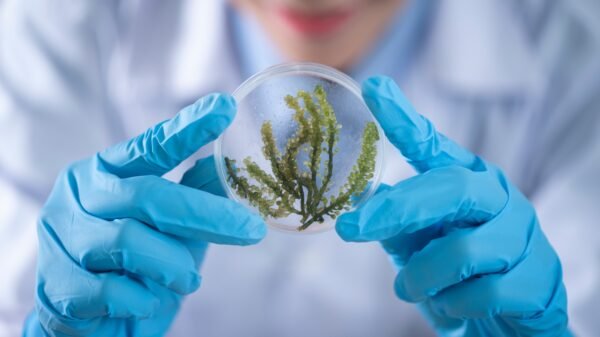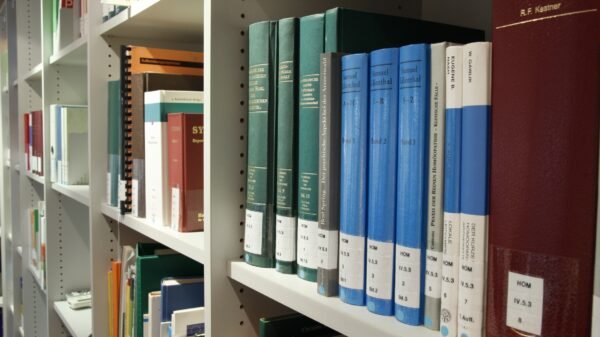
From farm to table, technology has been disrupting the traditional ways we produce and distribute food. With advancements in agriculture, transportation, and even artificial intelligence, our food systems are becoming more efficient and sustainable than ever before. Join us as we explore how technology is reshaping the future of food production and distribution, bringing fresh ideas to the table that have never been seen before. Get ready for a mouth-watering journey through innovation in this exciting field!
Introduction to How Technology is Revolutionizing the Way We Produce and Distribute Food
Technology is playing an increasingly important role in the food industry. From agriculture to distribution, new technologies are helping to improve efficiency and quality while reducing costs.
In agriculture, precision farming techniques are being used to optimize yields and reduce inputs. Drones and other sensors are being used to gather data on crop health and growth, while GPS-guided machinery is being used for planting and harvesting.
In food processing, new technologies are being used to improve quality and safety while reducing wastage. For example, RFID tags can be used to track food items throughout the supply chain, from farm to table. Food waste can also be reduced by using lasers and other sensors to identify spoiled or damaged food before it reaches consumers.
In distribution, new technologies are making it easier to get food to consumers quickly and safely. For example, blockchain technology is being used to track food items throughout the supply chain, ensuring that products are not tampered with or contaminated. Cold chain logistics are also becoming more efficient, thanks to new technologies such as IoT-enabled refrigerated trucks.
By adopting new technologies, the food industry can continue to meet the ever-growing demand for safe, nutritious, and affordable food.
Automation of Farming and Agriculture
The agricultural industry is one of the most important industries in the world. It is responsible for producing the food that we eat and the animals that we use for labor and food. The agricultural industry has been around for centuries, and it has undergone many changes over time. One of the most significant changes that has occurred in recent years is the automation of farming and agriculture.
The automation of farming and agriculture has revolutionized the way that we produce and distribute food. In the past, farmers had to rely on manual labor to plant, grow, and harvest their crops. This was a very time-consuming and labor-intensive process. With the advent of automated machines, farmers can now plant, grow, and harvest their crops much more quickly and efficiently. This has led to a decrease in the cost of food production, which has benefit consumers immensely.
The automation of farming and agriculture has also led to an increase in the quality of food production. Automated machines are able to carefully monitor conditions such as temperature, moisture levels, and nutrient levels. This allows farmers to produce food that is of a higher quality than ever before. Additionally, automated machines can more easily identify pests and diseases, which allows farmers to address problems quickly before they cause major damage to their crops.

The automation of farming and agriculture is having a profound impact on the way we produce and distribute food. It is reducing costs, increasing efficiency, and improving quality. The agricultural industry is being transformed by this technology,
Improved Logistics for Food Delivery and Distribution
Technology is revolutionizing the food industry by improving logistics and distribution. With the help of technology, businesses are able to track inventory, plan production, and predict demand. This allows for a more efficient food system that can get food to consumers faster and at a lower cost.
In the past, food distribution was often inefficient and costly. For example, if a grocery store ran out of an item, it would have to wait for a delivery from the supplier, which could take days or even weeks. But with technology, businesses can now track their inventory in real-time and re-order items as soon as they run low. This means that stores never have to run out of stock, and consumers can always find the products they need.
Technology is also helping to improve food safety. With the ability to track where food comes from and where it goes, businesses can quickly identify any problems with the supply chain. This traceability helps to ensure that only safe and healthy food products reach consumers.
The food industry is changing rapidly thanks to technology, and this is benefiting both businesses and consumers alike. With improved logistics and distribution, businesses can operate more efficiently while getting food to consumers faster and at a lower cost. And with improved safety measures in place, consumers can be confident that they are eating safe and healthy foods.
Impact of AI on Food Production and Distribution
In recent years, there has been a growing interest in the potential of artificial intelligence (AI) to transform the food system. From precision agriculture to automated warehouses and distribution centers, AI is already beginning to reshape how food is produced and distributed.
The impact of AI on food production is already being felt in the form of precision agriculture. This is where farmers are using sensors and data analytics to track things like soil moisture levels, crop yields, and weather patterns. This information can then be used to optimize irrigation, fertilizer use, and other agricultural inputs.
Precision agriculture has the potential to greatly increase crop yields while reducing water usage and chemical inputs. It can also help farmers respond more quickly to changes in the environment, such as drought or pests. In the future, AI-powered robots may even be able to autonomously tend crops 24/7.
The impact of AI on food distribution is less visible but no less important. Automated warehouses and distribution centers are already beginning to change the way food is stored and shipped around the world. These facilities use robots to pick and pack orders with incredible speed and accuracy.
The goal of these automation initiatives is to reduce costs and improve efficiency in the food supply chain. In the long run, this could lead to lower prices for consumers and a more reliable supply of fresh food year-round.
Using Data Analytics to Enhance Quality Control in Food Production and Distribution
Technology has revolutionized the way we produce and distribute food. In the past, food production and distribution were largely manual processes that were subject to human error. Today, however, data analytics is being used to enhance quality control in food production and distribution.
Data analytics is being used to track every stage of the food production and distribution process. This data is then used to identify areas where errors are occurring. By identifying these errors, corrective action can be taken to improve quality control.
Data analytics is also being used to predict future trends in food production and distribution. This information can be used to plan for future demand and ensure that adequate supplies are available.
The use of data analytics is enhancing quality control in food production and distribution and helping to ensure a safe and reliable food supply.
Growing Trends in Internet of Things (IoT) for Foods
IoT is playing an increasingly important role in the food industry, from production to distribution. The technology can be used to track food items throughout the supply chain, from farm to table. This provides a level of transparency that can help ensure food safety and quality control. Additionally, IoT can be used to optimize production processes and reduce waste.
In terms of production, IoT sensors can be used to monitor conditions such as temperature, humidity, and light levels in greenhouses or warehouses. This information can then be used to adjust conditions as needed to improve yields or prevent crop loss. Similarly, sensors can be used in factory settings to monitor equipment performance and identify potential issues before they cause downtime or product defects.
On the distribution side, IoT tracking devices can be attached to food products to provide real-time visibility into their location and condition. This is particularly important for perishable items, as it allows retailers and distributors to ensure that these products are delivered while still fresh. Additionally, this data can be used to better understand patterns of customer behavior and preferences.
The use of IoT in the food industry is still in its early stages, but it is clear that the technology has great potential to revolutionize the way we produce and distribute food.
Benefits of Using Technology for Producing and Distributing Foods
There are many benefits to using technology for producing and distributing foods. One benefit is that it can help farmers to produce food more efficiently. For example, farmers can use GPS technology to map out their fields and plan their planting and harvesting activities. They can also use sensors to monitor soil moisture levels, which can help them to irrigation more efficiently. In addition, farmers can use weather forecasting data to plan their activities around expected weather conditions.
Another benefit of using technology for food production and distribution is that it can help to reduce food waste. For example, retailers can use inventory management software to keep track of the food they have in stock and make sure that it is rotated properly so that older items are sold before they expire. This helps to reduce the amount of food waste that occurs when items are left on shelves past their expiration date. In addition, retailers can use data from customer purchase history to better forecast demand and ensure that they order the right amount of food from suppliers. This helps to reduce the risk of overstocking, which can lead to food waste as well.
Technology can also help to improve food safety. For example, Traceability systems can be used to track food items throughout the supply chain from farm to table. This information can be used to quickly identify sources of contamination in the event of a foodborne illness outbreak. In addition, computerized systems can be used to monitor cooking temperatures and other factors affecting food safety in commercial kitchens. This information can help cooks ensure that
Potential Challenges with Increasing Use of Technology
The use of technology in the food industry has revolutionized the way we produce and distribute food. However, there are potential challenges that come with increasing the use of technology in this industry. One challenge is the reliance on technology. The more we rely on technology, the more vulnerable we are to disruptions in the supply chain. Another challenge is the cost of implementing and maintaining new technologies. This can be a barrier for small businesses and farmers who may not have the resources to invest in new technologies. There is also the potential for misuse of technology. For example, if data from food tracing systems is not properly secured, it could be used to manipulate food prices or tamper with food products.







